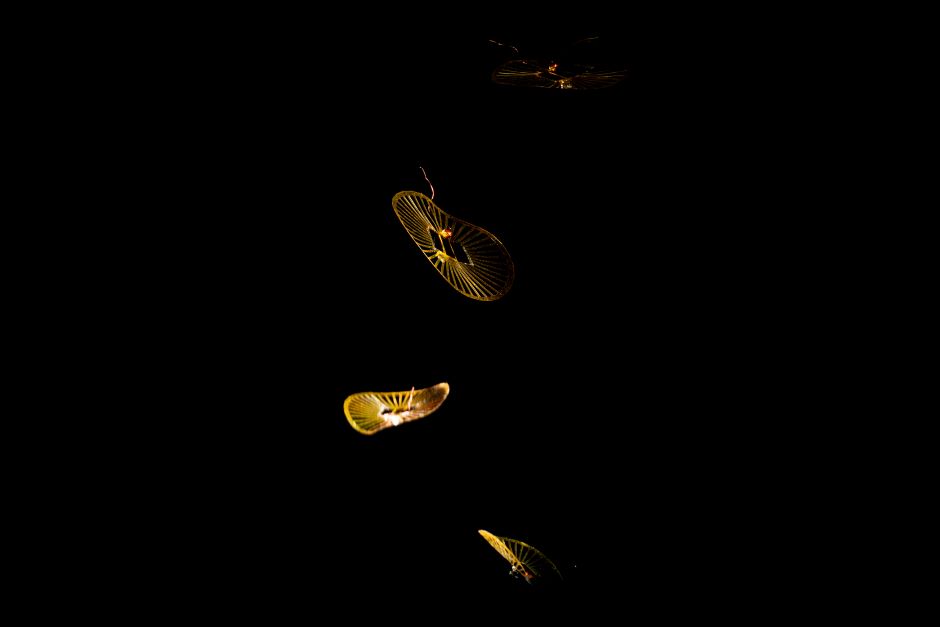Wireless sensors can monitor how temperature, humidity and other environmental conditions vary across large swaths of land such as farms or forests. These tools have applications in areas such as monitoring climate change and digital agriculture, but deploying sensors across a large area can be time-consuming and expensive.
Inspired by how dandelions use the wind to distribute their seeds, the team’s sensor-carrying device is around 30 times as heavy as a 1 mg dandelion seed, but can reportedly travel up to 100 metres in a moderate breeze once released by drone.
The device can hold at least four sensors. It uses solar panels to power its onboard electronics and can share sensor data up to 60 metres away, researchers said. The device uses backscatter, a method involving sending information by reflecting transmitted signals, to wirelessly send data back to researchers.
“We show that you can use off-the-shelf components to create tiny things,” said senior author of the study Shyam Gollakota, a UW professor in the Paul G. Allen School of Computer Science & Engineering.
“Our prototype suggests that you could use a drone to release thousands of these devices in a single drop. They’ll all be carried by the wind a little differently, and basically you can create a 1,000-device network with this one drop.”
Gollakota described the sensor-carrying device as ‘transformational’, because it could currently take months to deploy so many sensors.
AI soil sensors to help farmers curb fertiliser use
Insect deployable sensor could gather data in inaccessible areas
The team needed to develop a shape that would allow the system to take its time falling to the ground so that it could be ‘tossed around’ by a breeze. Researchers said they tested 75 designs to determine what would lead to the smallest ‘terminal velocity’ or the maximum speed a device would have as it fell through the air.
“The way dandelion seed structures work is that they have a central point and these little bristles sticking out to slow down their fall,” said lead author Vikram Iyer, a UW assistant professor in the Allen School. “We took a 2D projection of that to create the base design for our structures. As we added weight, our bristles started to bend inwards. We added a ring structure to make it more stiff and take up more area to help slow it down.”
The solar-powered devices landed with the solar panels facing upright 95 per cent of the time according to researchers, with their shape and structure allowing them to flip over in a similar way to a dandelion seed.

However, the sensors stop working after the sun goes down and need energy to get started in the morning when the sun comes up. The team designed the electronics to include a capacitor that can store some charge overnight.
“Then we’ve got this little circuit that will measure how much energy we’ve stored up and, once the sun is up and there is more energy coming in, it will trigger the rest of the system to turn on because it senses that it’s above some threshold,” Iyer said.
While the device will keep going until it physically breaks down, one drawback is that electronics will be scattered across the ecosystem of interest. Researchers are now studying how to make the systems more biodegradable.




Glasgow trial explores AR cues for autonomous road safety
They've ploughed into a few vulnerable road users in the past. Making that less likely will make it spectacularly easy to stop the traffic for...